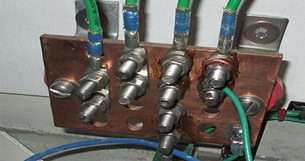Where Does Bonding and Grounding Go Next?
March 03, 2022
The following is an excerpt from David M. Richards' feature article in the Q1 2022 edition of ICT Today.
In Benjamin Franklin's quest to prove lightning as a form of electricity, he set out on a stormy afternoon with nothing but a silk kite, string, wire, metal key, and a hunch. While the kite was not struck by lightning on that infamous afternoon, Franklin was successful in proving that the lightning held an electrical discharge when he noticed that loose threads from the string were standing on-end 'Just as if they had been suspended on a common conductor," according to subsequent accounts by one of Franklin's colleagues, the British scientist, Joseph Priestly.
Furthermore, when Franklin put his finger near the metal key, also suspended from the string, he recounted feeling a spark when negative charges in the key became attracted to positive charges in his hand. While he did not know it at the time, Franklin's observations also confirmed that the electricity from the storm could
be charged over a conductor (the metal key) into the ground, providing a safe alternative path to the earth. Sound familiar?
While not nearly as whimsical as Franklin's kite in a storm, but no less important, today's National Electrical Code (NEC) defines grounding as intentionally connecting to earth (Code®, 2020), such as ground rods and water pipes. Bonding, meanwhile, is the effective joining of metal items, which could be achieved by a conductor or anchoring hardware (e.g., nuts and bolts). From a high level, it is proper to say that grounding is to provide a reference, an electrical anchor, and bonding is achieved to equalize potentials between metal surfaces. Simple enough, right?
 For this discussion, consider the components as the Grounding Electrode System (e.g., ground rods), the Equipment Grounding System, also known as the safety ground, (e.g., metal frames on panelboards and third prong on outlets), and the Telecommunications Bonding Infrastructure (e.g., busbars and bonding conductors), which features busbars and other components present in the telecom rooms. Simplifying it even further, electricians ground electrical systems and telecommunications professionals simply bond.
For this discussion, consider the components as the Grounding Electrode System (e.g., ground rods), the Equipment Grounding System, also known as the safety ground, (e.g., metal frames on panelboards and third prong on outlets), and the Telecommunications Bonding Infrastructure (e.g., busbars and bonding conductors), which features busbars and other components present in the telecom rooms. Simplifying it even further, electricians ground electrical systems and telecommunications professionals simply bond.
Beyond the basics, the electrical protection of today's high-speed cabling systems is an essential part of a prop erly designed and installed ICT infrastructure. A bonding and grounding system will aid in controlling negative influences, such as electromagnetic interference (EMI), electrostatic discharge (ESD), and ground potential rise (GPR) from lightning.
Click here to continue reading the complete article.
Posted by David Richards, CPI Product Manager, Open Systems at 3/3/2022 5:41:16 AM